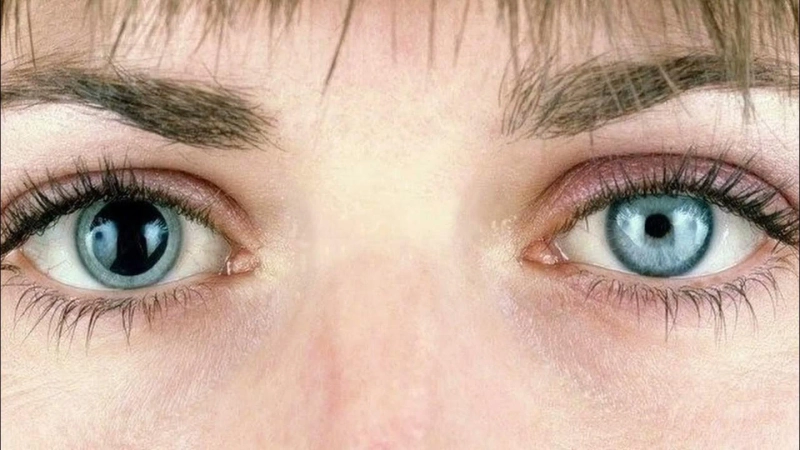Pupils, the black circles in the center of your eyes, play a vital role in controlling how much light enters the eye. While pupil size naturally changes based on lighting conditions, small pupils, also known as miosis, can sometimes indicate underlying health concerns. Understanding the causes and implications of small pupils can provide valuable insights into your overall well-being.
Understanding Pupil Size and Function
Pupil size is regulated by two types of muscles: the sphincter pupillae, which constricts the pupil, and the dilator pupillae, which enlarges it. In bright light, the pupils shrink to protect the retina. In dim light, they dilate to allow more light in. This automatic adjustment is part of the body’s natural response to the environment.
When pupils remain consistently small, even in low light, it may be time to consider whether this change is due to something beyond normal physiology.
What Do Small Pupils Mean in Everyday Life?
You might wonder: what do small pupils mean when they don’t adjust normally? In some cases, it’s completely benign. Age-related changes in the eyes can lead to smaller pupils over time, particularly in elderly individuals. This is known as senile miosis and usually isn’t a cause for concern.
However, persistent miosis in younger individuals can point to other issues. Small pupils could suggest exposure to certain medications, environmental toxins, or neurological imbalances. Understanding the broader context and related symptoms can help pinpoint the root cause.
Medications and Substances That Affect Pupil Size
Many prescription and over-the-counter drugs can lead to pupil constriction. Opioids like morphine and heroin are common culprits, often causing a pin-point pupil appearance. Certain eye drops used to treat glaucoma also cause miosis by stimulating the sphincter pupillae muscle.
Other substances, including alcohol and nicotine, may influence pupil size temporarily. If you're concerned about your pupil size after taking medication, consult a healthcare provider to assess whether it's a side effect or something more serious.
Neurological Disorders and Small Pupils
One of the more serious possibilities behind small pupils involves neurological damage. For instance, Horner’s Syndrome—a rare condition resulting from damage to the sympathetic nerves—leads to a triad of symptoms: miosis (small pupils), ptosis (drooping eyelid), and anhidrosis (lack of sweating) on one side of the face.
Brain injuries, brainstem strokes, or tumors may also impact nerve function, altering the body's ability to regulate pupil size. In such scenarios, the question what do small pupils mean becomes critical in diagnosing a potentially life-threatening issue.
Environmental and Psychological Factors
Surprisingly, environmental and emotional states can also influence pupil size. Bright light causes pupils to constrict naturally. Anxiety or depression might have subtle effects, as changes in serotonin levels can impact the nervous system, including pupil dilation and constriction.
Furthermore, exposure to toxins or certain plants, such as the poppy plant or organophosphate pesticides, may trigger involuntary pupil constriction. In such cases, the presence of small pupils might signal poisoning or an acute reaction requiring medical intervention.
When to See a Doctor About Small Pupils
If you’ve noticed a persistent change in your pupil size, especially if it affects only one eye or is accompanied by other symptoms (blurred vision, dizziness, or headaches), it’s time to consult a healthcare professional. Your doctor may perform a neurological exam, order blood tests, or recommend an MRI or CT scan to identify the underlying cause.
Being proactive can make all the difference in cases where small pupils point to larger medical concerns. It's important to not just ask what do small pupils mean but also seek answers through proper diagnostic channels.
Are Small Pupils Always a Problem?
In many cases, small pupils are not a reason to worry. For example, during sleep, relaxation, or meditation, your pupils may naturally shrink. Some people naturally have smaller pupils without any medical issues. As long as vision remains clear and no discomfort exists, pupil size alone isn’t a definitive indicator of health problems.
However, if there are any accompanying changes—like sudden sensitivity to light, eye pain, or noticeable asymmetry between the pupils—it’s worth investigating. Addressing the question what do small pupils mean in these cases can help detect and manage health conditions early.
Conclusion: Know What Your Eyes Are Telling You
Your eyes can offer a unique window into your health. While small pupils might simply be a normal response to bright light or aging, they can also serve as indicators of drug side effects, neurological issues, or systemic illness. Rather than ignore changes in pupil size, it's best to monitor them and consider the full spectrum of symptoms you may be experiencing.
The key is to stay informed. Next time you ask yourself what do small pupils mean, remember that the answer may depend on context, accompanying symptoms, and medical history. When in doubt, consult a professional to ensure your eye health—and overall well-being—remains intact.


